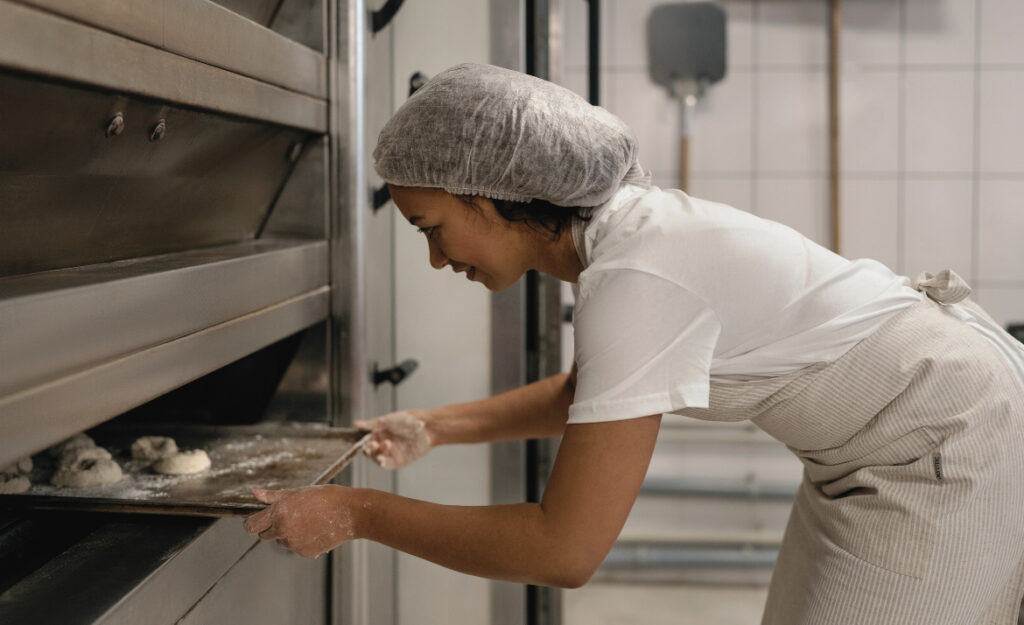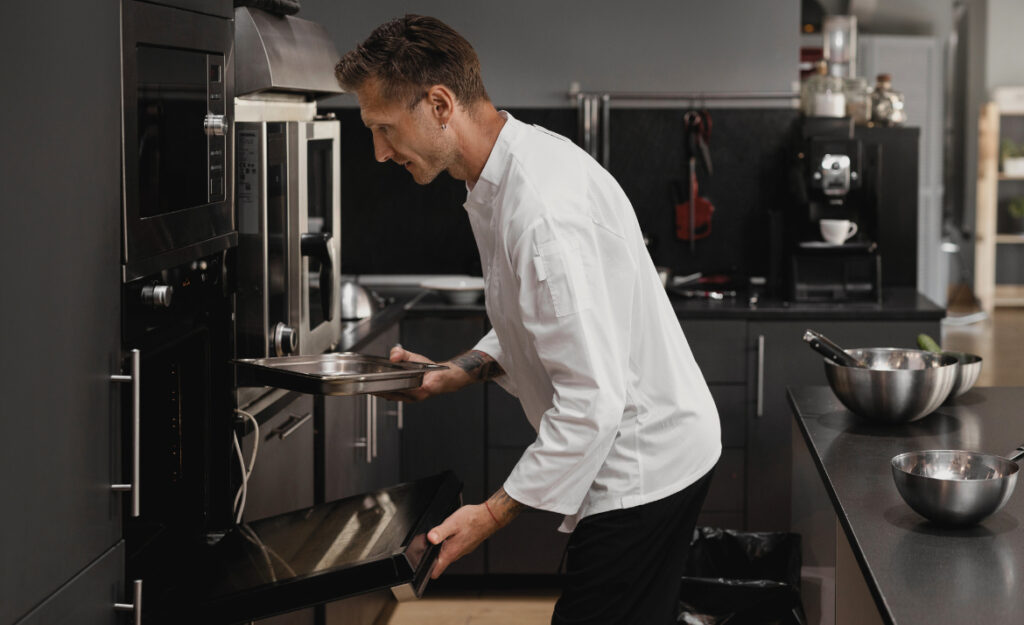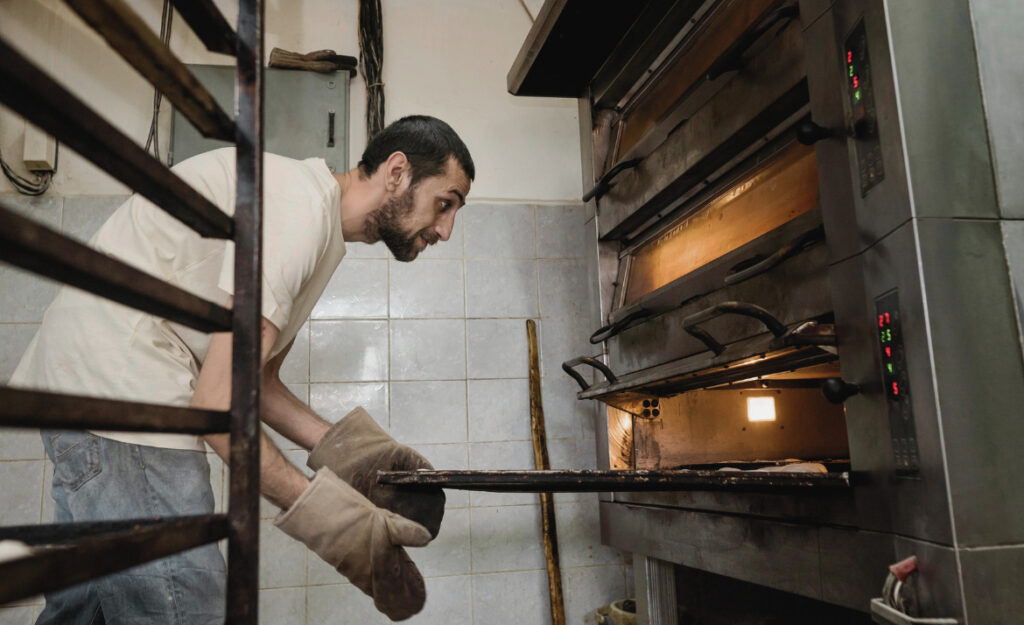
Consistency in baked goods matters as much in a small bakery as in an industrial kitchen. The drive to avoid uneven oven baking sits at the heart of professional cooking, since uneven trays create waste and frustration.
Within a bustling industrial environment, one patchy batch can unravel a day’s schedule. Chefs check, rotate, and recalibrate daily because customers expect flawless texture and rise. Reliable outcomes depend on systematic attention to detail and environment.
If you’ve ever sliced into a tray of pastries with pale spots or surprising dark edges, you’ll recognize these challenges. Read on for practical strategies to boost evenness, flavor, and workflow every single bake.
Orchestrate Even Heat Flow Every Time
Managing heat dynamics gives you direct control over bake consistency. In an industrial kitchen, well-placed trays lead to predictable, repeatable results for every batch. Treat airflow management as a non-negotiable daily ritual.
Spatial awareness determines how air, and therefore heat, circulates around racks. By consistently positioning trays and knowing your oven’s hot zones, you lock in uniformity instead of relying on chance or mid-bake guesses.
Mapping Your Industrial Oven’s Hot Spots
Commercial ovens rarely heat perfectly. A baker might notice one corner crisps faster, while another leaves dough slightly undercooked. Regularly placing temperature probes in different zones exposes these quirks in a trackable way.
Set aside a slow morning to mark oven racks and walls with removable stickers, highlighting warmest and coolest spots. Over time, you’ll allocate denser items where heat collects and rotate delicate pastries through milder areas as needed.
Recording these findings in a kitchen log ensures every shift member knows where heat peaks and dips. Standardizing knowledge creates team confidence, so no one guesses and every tray receives optimal placement for even results.
Implementing Tray Rotation and Spacing Routines
Picture two racks overloaded with pans—no space between them. Air can’t flow, so you get underbaked pockets or burnt edges depending on the rack’s position. Maintaining two inches between trays lets convection do its job.
Build rotation into your SOP: halfway through, rotate each pan 180 degrees and switch rack positions. If someone says, “We don’t need to rotate,” they’re missing out on professional-level consistency and risking costly waste.
This habit is as fundamental as measuring flour correctly. Combining thoughtful spacing and scheduled rotation transforms even the trickiest industrial ovens into reliable baking machines, minimizing surprises and streamlining workflow with each batch.
| Technique | Purpose | Best For | Action Step |
|---|---|---|---|
| Temperature Logging | Find hot/cold zones | Large multi-rack ovens | Use probe, record daily changes |
| Tray Rotation | Expose all tray areas | Dense or high-sugar products | Turn trays, swap tiers mid-bake |
| Rack Spacing | Boost airflow | Pastries, breads | Leave 2 inches between trays |
| Door Discipline | Prevent heat loss | Delicate meringues, soufflés | Limit opening, check through window |
| Tuning Oven Fans | Balance convection | Mixed product loads | Adjust speed for product density |
Standardize Ingredients, Temperatures, and Timing Across Shifts
When batches differ from morning to night, your base recipes and procedures need realignment. Matching ingredient temperatures, dough textures, and preheat times streamlines output and prevents uneven oven baking throughout your day.
Prep checklists—posted near the workstation—prompt bakers to assess flour temperature, dough hydration, and yeast activity before baking each day. This uniformity preserves quality from shift to shift, regardless of team composition.
Clarifying Temperature Expectations
Oven preheating isn’t just a startup ritual. Always bring the chamber to recipe-specific temperature before loading trays. Rushing this step, as some do in a hurry, instantly invites uneven oven baking, especially with multiple racks in play.
- Confirm oven temperature with a digital thermometer—never trust only the dial, since calibration drifts are common and cause underbaked centers.
- Designate one person to verify dough temperature at the mixer to prevent variability from lagging ingredients.
- Start timers at the moment trays enter and post times on a visible board—visual reminders encourage adherence even during volume rushes.
- Match batch size to oven capacity. Overloading creates cool pockets and extends bake times, which leaves the first pull undercooked.
- Label shift-specific logs with batch notes. Noticing darker crusts? Jot timings, so the next team can adjust proactively rather than react defensively.
Synchronizing these details keeps standards high and ensures that each batch meets expectations. The investment in routine pays off during every turnaround.
Boosting Ingredient Uniformity
Ingredient temperature variances disrupt rising, browning, and overall consistency in an industrial setting. Sourcing ingredients from the same cool room, using batch-prepped eggs, and hydrating flour with temperature-stabilized water help eliminate unpredictability.
- Store flour, butter, and yeast in well-labeled bins for easy access. Use temperature labels for rotation—cold to warm—when pulling for the day’s prep.
- Designate a double-checker for weighing ingredients to ensure accuracy, especially as shift fatigue can invite minor but costly variances.
- Record ingredient batch numbers for traceability and realignment if results trend off-target due to a shipment change.
- Allow dough time to acclimate; rush-proofing stunts rise and can produce a gummy crumb, especially with large-volume yeasted goods.
- Post reminders near prep areas: “Check temperature, measure twice, record results”—this culture of vigilance supports consistently even oven outputs.
Applying these practices heads off problems before the bake starts and boosts confidence during busy production swings.
Leverage Equipment Checks and Maintenance for Predictable Baking
Precise routine checks and scheduled maintenance offer reliable structure. When everyone knows the oven calibrates perfectly and heating elements function well, avoiding uneven oven baking becomes the default in your industrial kitchen.
This structure trims troubleshooting, as anyone can identify if results drift from normal. Leaders gain time back, and the entire team delivers consistently even bakes with less stress.
Creating a Maintenance and Calibration Schedule
Assign circulating reminders for weekly and monthly inspections: check door seals for cracks, clear crumbs from vents, and test thermostats’ responsiveness. “Nothing sticks or leaks” should be more than a wish—it’s achieved with brief, repeated checks before each shift.
Book a pro technician twice a year for deeper maintenance. Clean fans, test sensors, and validate timers with a stopwatch so that every feature in your oven works in harmony to reduce hot spots and ensure crisp, even crusts across every tray.
Standardize basic maintenance scripts: Wipe racks and doors, vacuum vents weekly, and log issues visibly at the workstation. If a team member reports “lower rack burns faster,” document this and contact your repair provider for adjustment. Systematic care saves ingredients and morale alike.
Building a Troubleshooting Playbook
If a batch bakes unevenly, resist quick fixes and consult a troubleshooting log. Record oven settings, tray positions, and batch details every time you notice an issue; patterns soon emerge, and fixes become clear rather than ad hoc reactions.
A handy playbook includes step-by-step instructions: If left edge browns faster, swap racks on a set timer. If back trays lag, reposition them forward after five minutes. Simple rules remove guesswork during peak hours and reinforce institutional knowledge even as staff rotates.
Invite feedback: Post “Was your bake even?” reminders and encourage team members to flag and detail any inconsistencies before clearing the station. Over time, this documentation sharpens everyone’s instincts for even oven performance.
Fine-Tune Tray Types and Positions for Maximum Consistency
Testing and choosing the right trays, liners, and rack heights directly affect your outcomes. Efficient tray usage saves time and reduces food waste by preventing the hotspots and soggy spots that signal uneven oven baking.
If your kitchen handles several products, maintain a chart near your oven: which rack, tray type, and liner combination fits each product best. Team members quickly spot mismatches and swap gear as needed to safeguard evenness.
Comparing Tray and Liner Materials
Aluminized steel trays brown baked goods efficiently and resist warping. Perforated trays speed airflow for crispier crusts but can dry out delicate items if unchecked. Silicone mats cushion bottoms but can slow heat transfer for certain pastries.
Test every new tray against a standard loaf or sheet of cookies, recording visible changes in browning, rise, and spread. If a batch emerges as “blond” compared to the expected golden finish, switch to a heavier gauge pan next time. Gradually, the kitchen locks in the ideal tray-per-product pairing.
Remember, durability matters. In an industrial setting, non-stick coatings and silicone liners must withstand frequent washing. Regularly check for wear and swap out anything that develops chips or warping, as these flaws skew heat transfer and inputs for the next batch.
Optimizing Rack Height and Spacing
Treat rack height as a lever for evenness, not just convenience. Items too high may brown before cooking through, while goods placed low risk underbaking or dense bottoms. Keep a reference card: lighter pastries up, hearty breads lower down for even rise and golden color.
Space trays evenly so every pan receives enough hot air. Remember to stagger trays if the oven allows, alternating front and back for large batches. Rotate and shuffle at the planned halfway mark to erase positional bias, especially when the kitchen is pressed for time.
When new hires join the line, walk them through a sample bake using every station’s combination of rack and tray—a brief training creates confidence and preserves standards, batch after batch.
Control Humidity and Airflow for Ideal Bake Textures
Proper humidity settings make or break crusts. Industrial kitchen ovens with steam injectors require recipe-aligned controls to develop crispy exteriors and tender crumbs. Poor humidity management always increases the risk of uneven oven baking.
Observe the finish on every bake: Soggy crusts or split edges usually call for steam adjustments or airflow balancing. Assign one team member per shift to monitor venting and record crust texture for lasting improvements.
Balancing Steam and Venting in the Bake Cycle
Inject steam at specific intervals, using a preplanned timer—two shots at three-minute intervals for large buns, for example. If textures lean rubbery, increase venting or reduce injection time. Post a quick-reference steam chart at the oven feel control board for newcomers.
Build confidence: “We inject steam at these times for these bakes—stick with the chart and adjust only after one full cycle.” Rotating team members across the role develops even skill distribution and strengthens the kitchen’s unity of practice.
Analyze finishes immediately as trays come out—sniff for crispness, tap bottoms for resonance, and record any deviations as action items. Real-time feedback speeds improvements and supports continuous bake consistency.
Train Your Team for Inspection and Real-Time Correction
Team training empowers everyone to spot issues and act on fixes. Set clear expectations for visual cues—shiny vs. dull crust, color gradations, and aroma signals—all relate back to avoiding uneven oven baking.
Run brief, practical sessions: “If this section is pale, what do you see?” Encourage trainees to point, describe, and map potential fixes aloud in the moment.
Scripted Correction Processes for Mid-Bake Adjustments
Standardize what to do if one tray outpaces others: rotate all trays on a schedule, swap top and bottom racks, or nudge underbaked goods closer to hot spots as soon as a discrepancy is observed. Model this openly until every team member feels comfortable executing without hesitation.
Encourage clear communication: Announce shifts verbally (“Rotating, swapping lower tray forward”). This ensures every teammate always knows what’s changing and why, preventing confusion and missed steps.
Follow up as a group: After each batch, review what did and didn’t work. Document improvements and lock in newly effective techniques in shift logs, so the whole kitchen benefits from every advance.
Anticipate Errors: Prevention and Recovery Tactics for Every Bake
Even flawlessly designed systems slip now and then. Build in double-checks, backup plans, and clear escape routes so recovery from uneven oven baking stays smooth and stress-free in the industrial kitchen.
If you find a batch underbaked or burnt on one side, rely on your playbook: insert a probe, adjust zones, and brief the team immediately so future cycles can avoid repeat errors. Calm, speedy recovery secures both morale and output.
Recap the core points: Focusing on even heat, standardized routines, meticulous equipment care, and open communication builds unwavering consistency in industrial baking. Applying these techniques means each team member can catch variances early and adjust in real time.
Reinforce the topic’s relevance: Reliable baking cuts down waste and maximizes quality, satisfying both operators and end customers. By employing these habits, industrial kitchens uphold both reputation and profitability batch after batch.
End with a thoughtful takeaway: Baking perfection isn’t a secret; it’s a meticulously honed discipline. With every upgrade to process or teamwork, you’re one step closer to flawless, evenly baked products in every industrial kitchen run.
Frequently Asked Questions
Why do some oven racks yield darker baked goods than others? Differences in oven construction and airflow cause certain racks to receive more direct heat. Tracking placement and rotating trays with each batch helps neutralize these variations for even outcomes.
Can changing tray materials solve uneven oven baking? Yes, tray thickness and material impact heat distribution. Switching to heavier, aluminized pans can correct pale bottoms or thin, warped trays. Always test new setups with sample bakes before full production.
How does staff training impact batch consistency? Well-trained teams recognize unevenness early and follow structured correction routines. Sharing clear processes ensures that all staff, regardless of experience, can execute mid-bake adjustments confidently and maintain product standards.
Are digital thermometers necessary in industrial kitchens? Absolutely—digital thermometers catch miscalibrated oven settings, which are common in heavy-use environments. A simple probe reading saves entire batches from going to waste by catching discrepancies before they multiply.
How do you document fixes for uneven baking? Maintain a kitchen log near the oven, and encourage team members to jot down details and fixes after every uneven bake. Accumulated notes support pattern recognition and quick problem-solving in future batches.



